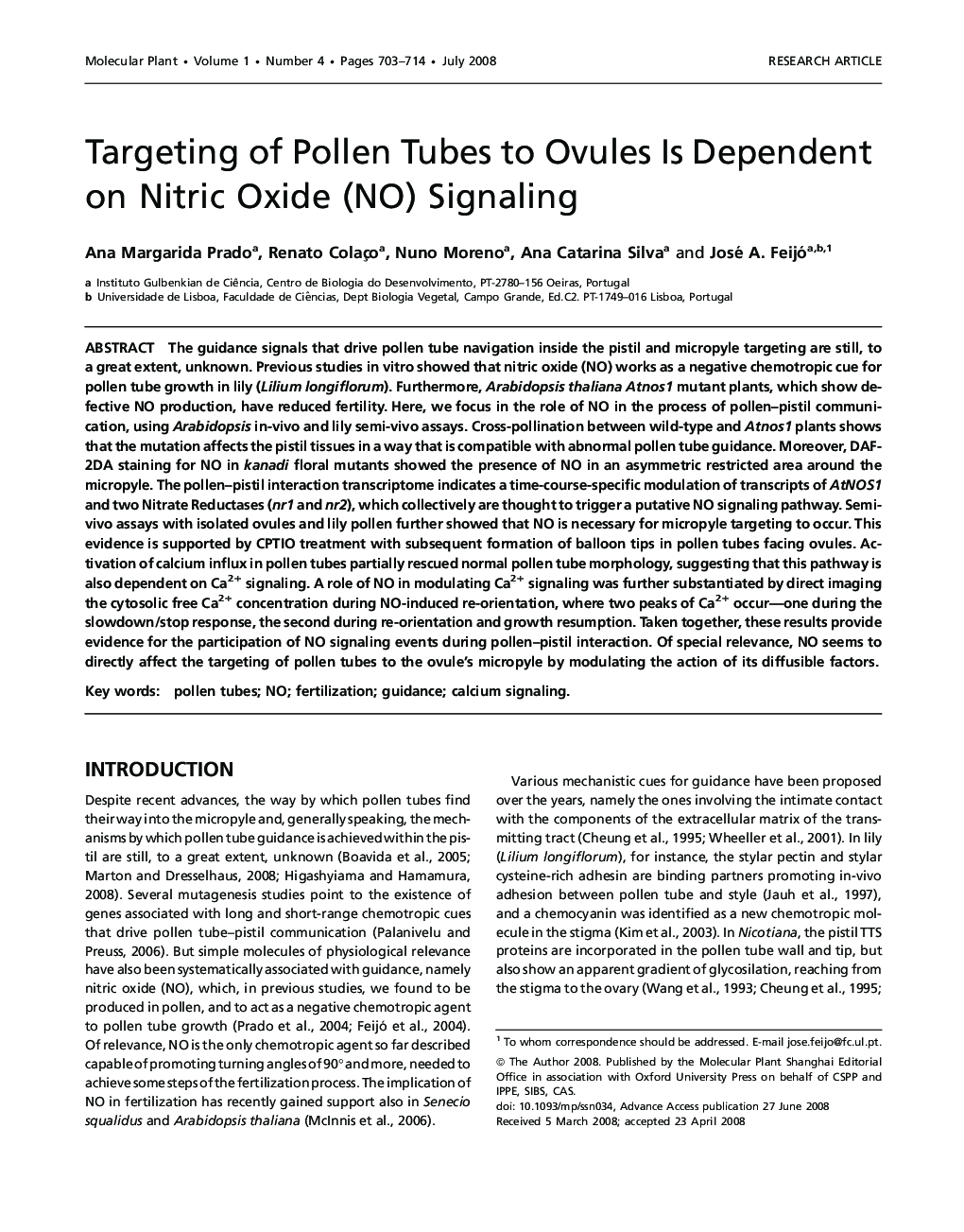| کد مقاله | کد نشریه | سال انتشار | مقاله انگلیسی | نسخه تمام متن |
|---|---|---|---|---|
| 4570642 | 1332059 | 2008 | 12 صفحه PDF | دانلود رایگان |

ABSTRACTThe guidance signals that drive pollen tube navigation inside the pistil and micropyle targeting are still, to a great extent, unknown. Previous studies in vitro showed that nitric oxide (NO) works as a negative chemotropic cue for pollen tube growth in lily (Lilium longiflorum). Furthermore, Arabidopsis thaliana Atnos1 mutant plants, which show defective NO production, have reduced fertility. Here, we focus in the role of NO in the process of pollen–pistil communication, using Arabidopsis in-vivo and lily semi-vivo assays. Cross-pollination between wild-type and Atnos1 plants shows that the mutation affects the pistil tissues in a way that is compatible with abnormal pollen tube guidance. Moreover, DAF-2DA staining for NO in kanadi floral mutants showed the presence of NO in an asymmetric restricted area around the micropyle. The pollen–pistil interaction transcriptome indicates a time-course-specific modulation of transcripts of AtNOS1 and two Nitrate Reductases (nr1 and nr2), which collectively are thought to trigger a putative NO signaling pathway. Semi-vivo assays with isolated ovules and lily pollen further showed that NO is necessary for micropyle targeting to occur. This evidence is supported by CPTIO treatment with subsequent formation of balloon tips in pollen tubes facing ovules. Activation of calcium influx in pollen tubes partially rescued normal pollen tube morphology, suggesting that this pathway is also dependent on Ca2+ signaling. A role of NO in modulating Ca2+ signaling was further substantiated by direct imaging the cytosolic free Ca2+ concentration during NO-induced re-orientation, where two peaks of Ca2+ occur—one during the slowdown/stop response, the second during re-orientation and growth resumption. Taken together, these results provide evidence for the participation of NO signaling events during pollen–pistil interaction. Of special relevance, NO seems to directly affect the targeting of pollen tubes to the ovule's micropyle by modulating the action of its diffusible factors.
Journal: - Volume 1, Issue 4, July 2008, Pages 703–714